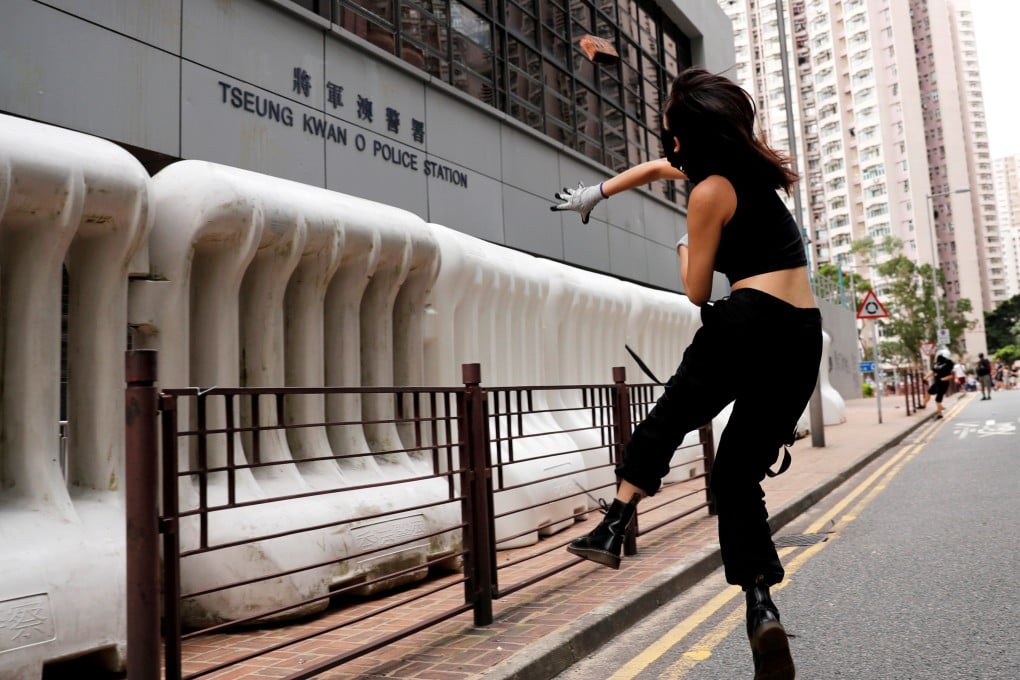#ProtestToo: the women at the forefront of Hong Kong’s anti-government movement
- Female protesters are increasingly facing off against police amid escalating violence during the city’s summer of discontent
- Some say the movement has helped change stereotypes but it has also seen reports of sexual violence and other forms of harassment

Jordyn sleeps at night cuddling her teddy bear, while surrounded by dolls. She keeps her voice low and slow – and gets easily startled by loud noises.
“I am not a brave person at all,” says the 23-year-old.
But on recent weekends, she has mustered the courage to take to the streets – sometimes by herself – equipped with goggles, a respirator, filters and bottles of water to extinguish tear gas canisters.
“I am not physically strong, and I don’t do sports,” she says. “So I feel quite surprised how girls, including myself, have reacted in these situations. I think we have all toughened up.”
The leaderless movement, now entering its 13th week, has mostly been represented by male faces. But women joining the protests have become more daring, with many increasingly willing to go on the front lines and actively engage in a face-off with the police, according to more than a dozen female and male protesters interviewed by This Week in Asia.